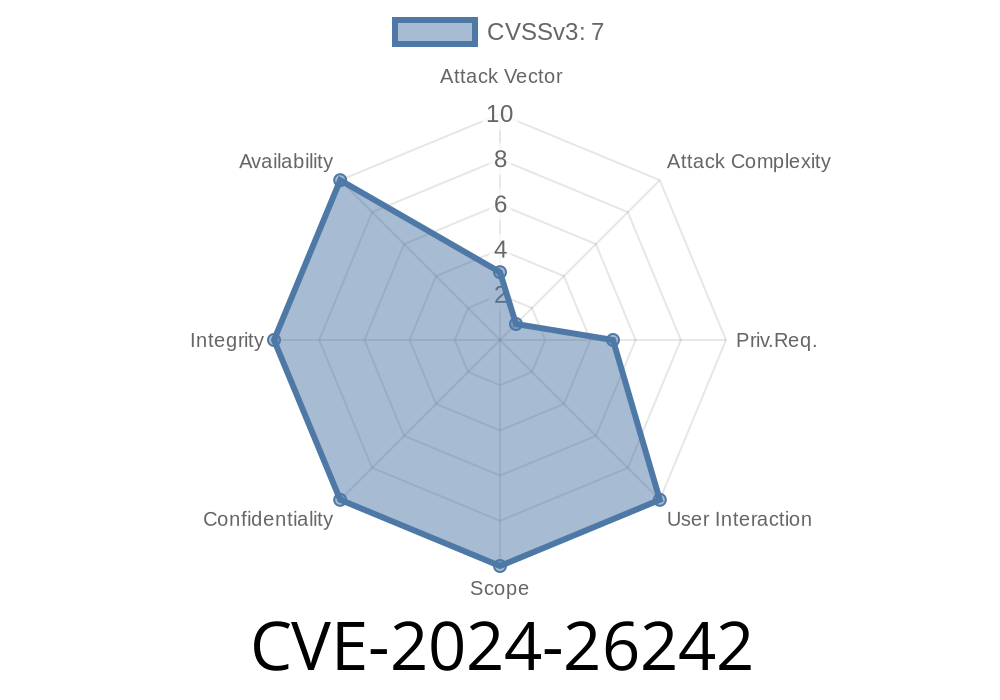Good news (sort of) for Windows admins and cybersecurity buffs! A new vulnerability—an elevation of privilege vulnerability—has just been identified in Windows Telephony Server. This exploit, designated CVE-2024-26242, enables a hacker to gain unauthorized admin rights on a vulnerable Windows machine. This blog post will break down the threat, let you in on its inner workings, give you some code snippets, and point you to original references, so that you can brace yourself against it.
Vulnerability Details
The CVE-2024-26242 vulnerability stems from the improper handling of objects in the memory management of Windows Telephony Server—an integral component of Windows used for managing telephony applications. Telephony Server uses Remote Procedure Call (RPC), which exposes it to this elevation of privilege attack. A malicious user can exploit this vulnerability to run arbitrary code at a higher level of access, thereby wreaking havoc on the system. This vulnerability has been assigned a Common Vulnerability Scoring System (CVSS) score of 7.3, indicating it to be a high-severity security threat.
Here is a simplified code snippet demonstrating the exploitation of the CVE-2024-26242 vulnerability
#include <windows.h>
// Exploit function
void exploit() {
// Connect to telephony server
HANDLE hServer = connectToTelephonyServer();
// Craft malicious RPC message
void* craftedMessage = craftMaliciousMessage();
// Send crafted RPC request to the telephony server
sendRPCRequest(hServer, craftedMessage);
// Clean up resources
free(craftedMessage);
CloseHandle(hServer);
}
HANDLE connectToTelephonyServer() {
//... code that connects to telephony server...
}
void* craftMaliciousMessage() {
//... code that crafts malicious message...
}
void sendRPCRequest(HANDLE hServer, void* message) {
//... code that sends RPC request with the malicious message...
}
To have a deeper understanding of CVE-2024-26242, check out these official resources
- Original Advisory by Microsoft
- National Vulnerability Database (NVD) Entry for CVE-2024-26242
How to Mitigate the Risk
Microsoft has issued a patch to address the CVE-2024-26242 vulnerability. Hence, as a Windows user, you are recommended to apply the latest security updates to your system as soon as possible. Second, ensure that your security software is set to automatically update its malware definitions daily.
Stay Informed and Stay Safe
CVE-2024-26242 may just be one of the many existing and yet-to-be-discovered vulnerabilities, but arming yourself with accurate knowledge about the threat is the best possible defense. Stay updated with the latest developments by following trusted sources of information. And remember, a secure system starts with you staying informed and proactive.
Timeline
Published on: 04/09/2024 17:15:45 UTC
Last modified on: 04/10/2024 13:24:00 UTC
